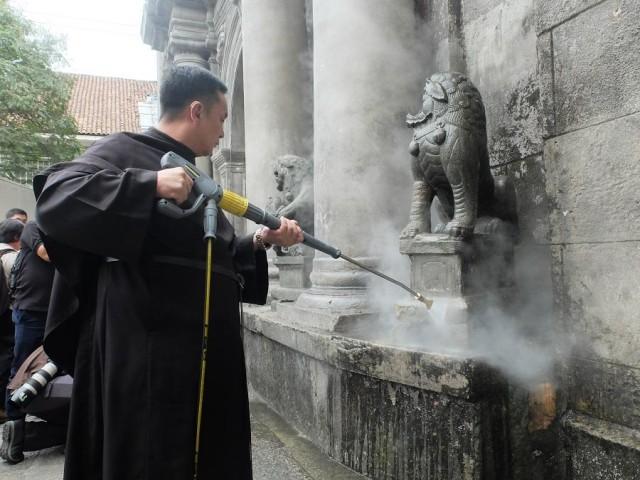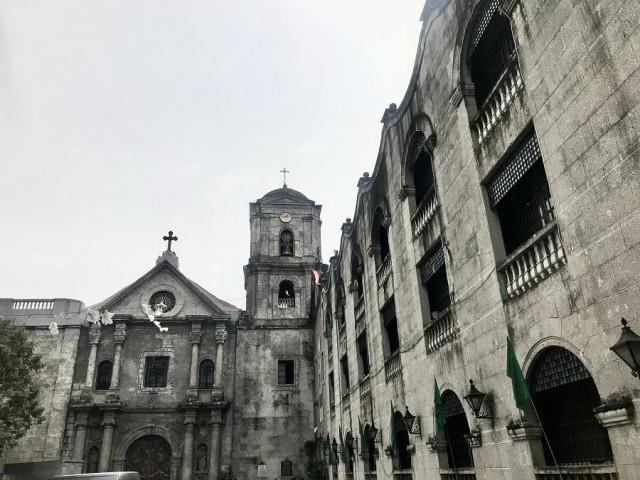What you need to know about the San Agustin Church and the efforts to preserve it
Completed in 1604, San Agustin Church in Intramuros, Manila is a UNESCO World Heritage Site. The landmark is a guaranteed must-see for anyone who wishes to learn about the rich history of the Catholic Church in the Philippines.
Taking in the structure's 16th century splendor is already an experience in itself but walking the halls of an age-old monastery-turned-museum, housing a large collection of artifacts and artworks depicting Augustinian life, make it doubly so.

San Agustin Church is more than 400 years old, and the unfortunate truth is, it shows.
Ghastly looking patches of black and green cling to its stones, making makes it easy to tell that the church has been at the mercy of algae, moss and pollution for many, many years.
Maintenance
In a press conference Thursday, San Agustin Church museum director Fr. Ricky Villar, who oversees maintenance efforts in the church, admitted they were in need of some help.
"We are faced with a monumental task: The San Agustin Church, the convent and the monastery need all the assistance it can get to help preserve and maintain this world heritage status."
Villar also admitted that the last time the church's exterior was given intensive cleaning was around six or seven years ago, wherein brushes were used to cleanse the Church's delicate facade.

"Cleaning methods on heritage buildings may cause surface damage if the method lacked proper specification and control," he said.
Restorative cleanup
The church underwent restorative cleaning last week, in partnership with Kärcher, a Germany-based company that first helped in cleaned the Rizal Monument in December 2017 and the People Power Monument in February 2018.
For the San Agustin Church, Kärcher sent in cleaning expert Thorsten Moewes who used hot water high-pressure cleaner to remove the biological growth and other materials from the stone exterior.

According to the German expert, the use of hot water is efficient as it would also be removing contamination and help prevent the growth from coming back.
"We are cleaning not with high pressure, but with high temperature and power of steam," he said.
Villar likewise allayed fears that the deep cleaning might damage the church's delicate stone exterior, saying the chemical-free technique was "non-invasive" and "guaranteed safe."
The museum director was also happy to announce that Kärcher is giving the San Agustin Church one of its cleaning units in the hope of maintaining the heritage site's lustrous image.
"The health of the building is not determined by an appearance that might be viewed from a distance or across the street, but by what is happening in the actual surface itself," Villar said. — LA, GMA News




